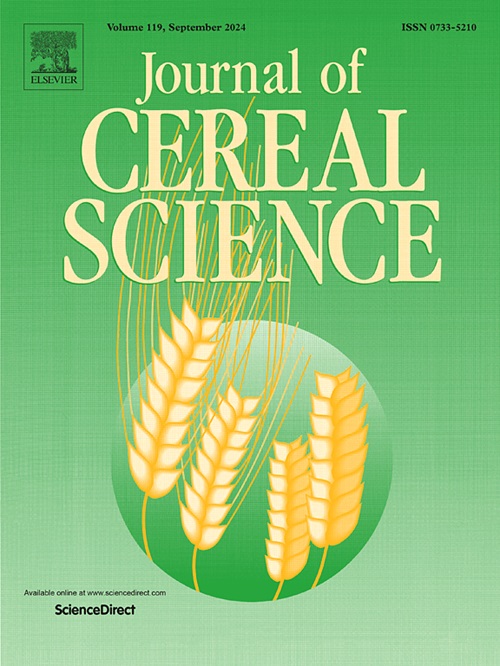Linking the grain weight damage by Fusarium graminearum and the gluten composition of bread wheat under different sulfur fertilization
IF 3.9
2区 农林科学
Q2 FOOD SCIENCE & TECHNOLOGY
引用次数: 0
Abstract
Fusarium head blight (FHB) has great destructive potential, with the influence of sulfur crop nutrition on this disease being poorly investigated in bread wheat. This work aimed to analyze the impact of sulfur fertilization on the F. graminearum/bread wheat interaction, relating the grain weight damage to changes in protein composition, and the consequent impact on quality predictive parameters. Two field experiments were conducted, applying treatment combinations of sulfur fertilization and artificial inoculation. Early application of sulfur fertilizer slightly reduced FHB parameters when disease intensity was high, suggesting their possible utility as a partial mitigation strategy. Differential degradation of gluten protein fractions was observed as grain damage increased (i.e., from linear functional relationships to linear-plateau), and S application did not alter these functions. Glutenins were more sensitive to grain damage than gliadins, with a threshold of grain weight loss around 37 %, above which a general alteration of protein composition was triggered. The high molecular weight glutenin subunit encoded by Glu-A1x became relevant due to its sensitivity to fungal degradation. To our knowledge, this work provides novel information about the influence of sulfur crop nutrition on the F. graminearum-wheat pathosystem and could contribute to modeling the alterations in gluten composition and quality.

不同施硫对面包小麦穗粒重危害与面筋成分的关系
小麦赤霉病(Fusarium head blight, FHB)具有很大的危害潜力,但目前对含硫作物营养对该病害的影响研究较少。本研究旨在分析硫施肥对小麦/面包小麦互作的影响,分析籽粒重损害与蛋白质组成变化之间的关系,以及由此对品质预测参数的影响。田间试验采用硫肥与人工接种组合处理。当疾病强度高时,早期施用硫肥会略微降低FHB参数,这表明它们可能作为部分缓解策略的效用。随着籽粒损伤的增加(即从线性函数关系到线性平台关系),观察到面筋蛋白组分的差异降解,而S的施用并未改变这些函数。谷蛋白比麦胶蛋白对籽粒损伤更敏感,籽粒重量损失的阈值约为37%,超过这个阈值就会引发蛋白质组成的普遍改变。由Glu-A1x编码的高分子量谷蛋白亚基由于其对真菌降解的敏感性而变得相关。据我们所知,这项工作提供了关于含硫作物营养对小麦赤霉病系统影响的新信息,并有助于建立面筋成分和质量变化的模型。
本文章由计算机程序翻译,如有差异,请以英文原文为准。
求助全文
约1分钟内获得全文
求助全文
来源期刊

Journal of Cereal Science
工程技术-食品科技
CiteScore
7.80
自引率
2.60%
发文量
163
审稿时长
38 days
期刊介绍:
The Journal of Cereal Science was established in 1983 to provide an International forum for the publication of original research papers of high standing covering all aspects of cereal science related to the functional and nutritional quality of cereal grains (true cereals - members of the Poaceae family and starchy pseudocereals - members of the Amaranthaceae, Chenopodiaceae and Polygonaceae families) and their products, in relation to the cereals used. The journal also publishes concise and critical review articles appraising the status and future directions of specific areas of cereal science and short communications that present news of important advances in research. The journal aims at topicality and at providing comprehensive coverage of progress in the field.
 求助内容:
求助内容: 应助结果提醒方式:
应助结果提醒方式:


